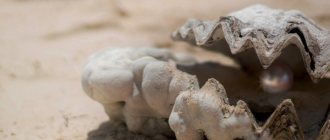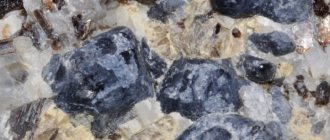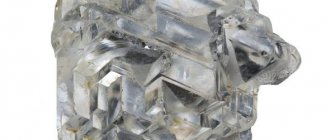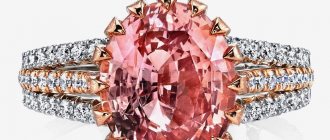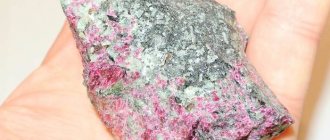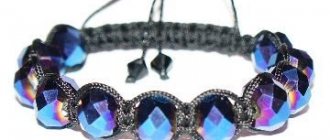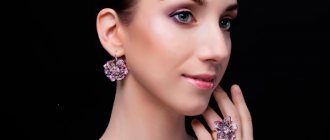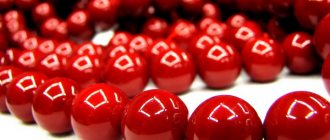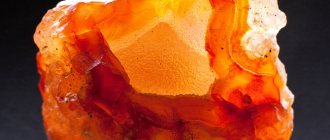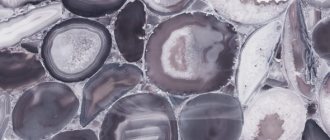Turquoise stone: magical properties, who is suitable, zodiac sign
Turquoise is a stone familiar to many people. It has long been called “the stone of luck” or “the stone that brings good luck.” The interesting thing is that its color shades can vary, from gray to green. This stone has long been credited with many unique properties. These properties include both magical and healing abilities of the stone.
Even in the old days, it was read that contemplating turquoise during the day relieves a person of depression and bad mood.
From some studied and proven facts, it is worth knowing that frequent observation of the stone improves vision . This property is associated with the bright shade of the stone. In addition, direct contact with the stone on the human body has a beneficial effect on the functioning of the cardiovascular system. That is why it is recommended to wear turquoise in earrings and pendants (closer to the heart).
Psychologists say that the bright color of the stone helps a person feel fear as little as possible and not become emotionally overstrained . It is believed that turquoise is a remedy for overwork .
turquoise beads
Turquoise also has a huge number of magical properties:
- Turquoise (but only natural) helps a person always be in a good mood
- People wearing turquoise are distinguished by wealth and financial well-being
- Turquoise gives its owner good health and longevity, prosperity and joy of life
- It is believed that turquoise can reconcile even malicious enemies and extinguish any anger
It is interesting to know that a stone, when in close connection with its owner, is even capable of changing its hue in order to warn the “owner” of impending problems. In the Middle Ages, turquoise was especially valued by women, because this stone, in their opinion, could help them in “matters of the heart.” To do this, ladies sewed a pebble into the clothes of their beloved man. A turquoise gift to a lover was considered a symbol of fidelity and family happiness.
From other observations of the stone, it should be noted that turquoise has a positive effect on human intuition. The owner of turquoise is more courageous and happier in life than other people. This happens because this stone has relatively strong positive energy. The energy of the stone changes depending on its color. For example, sky blue turquoise is protection from evil , which means it is stronger than all other shades.
Interesting fact: During the process of birth of a stone in nature, as well as during its maturation, the stone changes its color and its energy. A stone is “born” gray, “grows up” blue and “ripens” green. Green turquoise is considered the weakest in energy and practically a “dying” stone. Green turquoise is suitable only for mature people who no longer strive to achieve any goals, but simply spend time relaxing.
reticulated turquoise
Healing properties of the stone:
- Turquoise is useful to wear for those people who often suffer from nervous tension and insomnia . In such cases, jewelry made from silver will become extremely relevant. Silver absorbs negative energy, and turquoise gives positive energy.
- Turquoise on the chest treats the heart and diseases of the circulatory system: varicose veins, thrombosis.
- Also, turquoise in pendants and bracelets helps to get rid of peptic ulcers and any diseases that affect the liver.
- It is believed that turquoise framed in gold will improve a person’s immunity
Important to know: If you wore turquoise and after a while you noticed that the stone had darkened, this is a “signal” that you should see a doctor for a health examination.
turquoise - gemstone
Blue opal
A less common stone is blue opal. In the best specimens, against the background of the base color, a play of color can be seen in the form of bright multi-colored iridescent spots. This pattern of color play is called a pattern. Main patterns: “honeycomb” - opalescence is represented by cells in the form of a honeycomb; “pinfire” - many small multi-colored dots; "harlequin" is the rarest type, in which the pattern of colored spots is similar to a harlequin costume.
The most expensive blue opal specimens should show bright spots of red-orange tones. In general, the more large multi-colored spots in a stone, the higher its value. There are opals without color play. Such specimens come, for example, from Peru. In our system for describing the color of opals, we indicate the color of the stone with its hue and whether it has opalescence. Thus, the blue, greenish-blue and violet-blue primary colors stand out. Example description: “blue with opalescence.” Australian copies are the most expensive. Opals are very beautiful, each specimen is unique.
VIEW ALL OPALS
Blue zircon
The stone of natural origin is blue zircon. It should not be confused with artificial cubic zirconia, which is sometimes incorrectly called zircon in the trade. Zircons in general have a very diverse color range. Blue zircon is more valuable than others. But you need to keep in mind that this color is obtained by heat treatment of brown zircons from Cambodia. The main distinguished colors of such zircons are:
- blue;
- slightly greenish blue.
Color intensity:
- average;
- strong;
- saturated.
Jewelry with zircons is recommended to be worn only on special occasions, and not every day. This is due to their relatively low hardness and fragility. One of their main features is high dispersion. In bright spot lighting they shimmer with all the colors of the rainbow.
VIEW ALL ZIRCONS
Blue aquamarine
Aquamarine is a blue variety of beryl. The name of this “semi-precious” stone is translated from the Latin “aqua marina” as “sea water”. Aquamarines are often very light in color. It is best visible in large stones. According to our system, there are two main shades: greenish-blue and light blue.
The intensity levels are as follows: very light, light, medium, strong and deep. The top aquamarine has a deep blue color called Santa Maria. Aquamarines usually do not contain inclusions or cracks.
VIEW ALL AQUAMARINES
Blue Topaz
One of the most popular stones in Russian jewelry is blue topaz. The stones acquire shades of blue as a result of irradiation of colorless and brownish topazes. In some cases, this is followed by heat treatment.
In commerce, there are 3 types of blue topaz: “Sky Blue” - light; "Swiss Blue" - medium; "London Blue" is a deep color. According to our system, these colors will have the following degrees of intensity:
- light (Light);
- average (Medium);
- deep
The price of these topazes is not high - first dollars and tens of dollars per carat. And it hardly grows with increasing mass. On the plus side, it is also worth noting that even in large sizes they usually do not contain any inclusions. Blue Topaz is a stone that can be worn every day.
VIEW ALL TOPAZES
What does turquoise look like, what color is the stone, its meaning?
In some countries (Tibet), turquoise is still considered not a stone, but a real divine essence. Ancient Persian beliefs, for example, stated that turquoise is the result of the decomposition of the bones of those people who died of love. Due to the strong energy of the stone, it has always been recommended to be worn by travelers for good luck on the road, lonely people to find love, and the sick to recover.
Visually, you can distinguish several types of turquoise:
- Blue-blue
- Blue
- Greenish blue
- Green
- Pale blue
- Pale green
- Mesh turquoise
- Lace turquoise
- Turquoise with a yellowish tint
- Gray-green turquoise
- Olive turquoise
- Brown turquoise
- White turquoise (chalky)
natural turquoise stone
It is interesting to know that the mesh pattern that may be present on the surface of turquoise is formed due to thin veins. These veins are composed of manganese oxide and iron oxide. Their formation is also influenced by the carbonaceous shale found in the rock. If turquoise has many inclusions, it is usually called “matrix” or “lace”. Only light-colored turquoise can be like this.
Physicochemical properties of the mineral
Turquoise, from the point of view of chemists, is a hydrated phosphate of aluminum and copper. Essentially it is copper sulfate with an admixture of aluminum and minor inclusions, which determine the shade and density of the mineral.
Chemical formula – CuAl6[PO4]4(OH)8•5H2O, an opaque blue mineral with a matte or waxy luster.
It has green varieties, but any variation displays the dark, bubbly veins characteristic of these stones.
Hardness on the Mohs scale is relatively low - 5-6 units. It can be cracked with a hammer blow.
Turquoise stone – white, blue, green, red, purple: photo
The structure of the stone is crystalline, with veins . Sometimes turquoise has growths, sinter masses or layers. Natural turquoise is not transparent . The stone has a pleasant, sometimes waxy , sometimes matte shine . The density of natural stone is very high.
The color of the stone most often corresponds to its name - turquoise, but it often has many completely different shades. The color of turquoise differs depending on the deposit and type of stone. For example, Arizona turquoise (mined in the USA, Arizona) is considered the best and most expensive. This stone comes in a variety of colors and often has black inclusions and even patterns.
blue turquoise
blue turquoise
green turquoise
gray, blue and white turquoise
brown and other types of turquoise
Basic blue colored gemstones
The blue stones below are ranked in descending order of their value according to Gemlovers.
Blue Diamond
Blue diamonds are considered one of the rarest and most expensive substances on our planet. This coloration is usually not bright and often has distinct shades of gray and green.
According to the GIA classification, blue diamonds are divided into the following colors with shades: Blue, Greyish Blue, Greyish Greenish Blue, Greyish Violetish Blue, Greenish Blue, Violetish Blue, Grey-Blue, Green-Blue. The intensity gradations are: Faint, Very Light, Light, Fancy Light, Fancy, Fancy Intense, Fancy Vivid, Fancy Deep and Fancy Dark. The most expensive color is Fancy Vivid Blue.
When searching for custom blue diamonds, we study current market offers from reliable suppliers and offer for purchase only the most attractive specimens with GIA certificates that confirm the suitability of the color. It is worth keeping in mind that the mass of blue diamonds is usually represented by samples up to 1 carat.
Blue sapphire
Among sapphires, the border between blue and blue is very arbitrary. We classify only light specimens of the “Pastel Blue” gradation as blue sapphires. The next most intense gradation for sapphires according to our system will already apply to blue specimens - “Light Blue”.
Purple and greenish shades, as well as obvious zoning on the side of the stone platform, reduce the price. Sapphires are often heat treated. This can sometimes remove undertones and also make light blue sapphires richer and cleaner. For our clients, we select sapphires of the most vibrant colors from Sri Lanka, the birthplace of the best sapphires. To confirm their natural origin and lack of refinement, we provide expert opinions from foreign and Russian gemological laboratories. Blue sapphire gemstone can be a great investment.
VIEW ALL SAPPHIRES
Paraiba Tourmaline
Paraiba blue tourmaline is the most valuable variety of the tourmaline mineral group. They were first found in the state of Paraiba in Brazil, after which they were named. They went on sale on the world market in 1988. Paraiba tourmalines are famous for their rare neon blue color. Scientists associate their color with the content of copper impurities. Purple and green shades reduce the price, so heat treatment is often used to eliminate them. The main colors of these tourmalines are:
- blue;
- greenish blue;
- green-blue.
Intensity:
- average;
- intense;
- strong;
- rich;
- deep.
These days, most Paraiba tourmalines come from mines in Mozambique. The color of the stones from there is usually in the light greenish-blue range. Specimens from Nigeria have also been discovered recently, but they are rarely found on sale. Brazilian specimens are the most expensive and are of investment interest. They are characterized by the brightest color. And only among them we highlight the darkest-colored gradation “Deep Blue”. Unfortunately, Brazilian specimens are rarely larger than 1-2 carats. A good quality Paraiba tourmaline is a stone that is sure to make an impression.
VIEW ALL PARAIBA TOURMALINS
Blue spinel
Jewelry-quality blue spinel is one of the rarest. The most expensive is Vietnamese cobalt spinel with a unique neon blue color. It usually has poor clarity and is rarely cut larger than half a carat. Most blue spinels are not so bright, they are colored with iron impurities and can reach larger sizes. In addition to Vietnam, bluish-blue spinels come from Sri Lanka, Burma and Tanzania. Basic shades of blue spinel:
- violet-blue;
- blue;
- slightly greenish-blue.
Color intensity:
- light;
- average;
- strong;
- saturated.
An important advantage of spinel is that it is extremely rarely refined. Its properties are similar to sapphires, and can be an excellent alternative to them. Blue spinel is a stone that connoisseurs will appreciate.
VIEW ALL SPINELS
Jewelry with turquoise for men made of gold and silver: rings, rings, signets
Turquoise should not be considered only as a feminine stone. Increasingly, modern jewelry companies and manufacturers are creating men's jewelry complemented with turquoise. Correctly chosen jewelry will not only improve health and lift your spirits , but will also help ensure that good luck accompanies a person.
Men's jewelry with turquoise:
Silver ring with turquoise
Bauble with turquoise
Men's ring with turquoise chips
Silver ring with turquoise
Origin and distribution
The formation of turquoise is usually associated with supergene or low-temperature (180°-80 °C) hydrothermal processes. Occurrences of turquoise are often associated with zones of secondary alteration of copper deposits.
Mineral distribution
Turquoise has always been a popular stone and highly valued; it was and remains one of the first ornamental stones. Its deposits are numerous, but their reserves are usually small, as a result of which the targeted extraction of natural raw materials is quite expensive. Turquoise mining centers are known in many ancient civilizations, and some ancient mines are still in operation today. However, much of the natural turquoise today is mined from large copper deposits as a by-product, particularly in the United States.
Turquoise is a stone of love: how to charm turquoise into love?
Turquoise has long been considered a stone of love. For this reason, it was worn by both women and men. Lonely people believed that turquoise could give them a meeting with their loved one . Family people wore turquoise in order to preserve and protect their family happiness .
To date, the stone has not changed its magical properties. It is typical to be worn by those people who do not need drastic changes, but want to find their calm happiness of strong family relationships. It is recommended to choose the turquoise that suits your zodiac sign.
A turquoise gift is considered a sign of a strong love relationship. A husband or wife gives their significant other turquoise as a recognition of fidelity and devotion.
Turquoise is a stone of love.
You can charm the stone into love and enhance its energy using a spell:
Love spell
Natural turquoise
This type includes all untreated stones; such copper turquoise (the mineral contains a high amount of copper, which gives the blue-green palette of shades) has not been subjected to additional processing. This means that the minerals were not impregnated with special substances and were not tinted for a brighter shade. Of course, not every natural stone is used in jewelry making, but only the highest quality raw materials. Such minerals have the greatest hardness and their only processing is grinding and cutting.
On topic: Shattuckite stone: physical and magical properties
Such gems are among the most expensive types of turquoise, regardless of shade. Jewelry with natural stones cannot be found in online jewelry stores. You should look for such products only in the luxury segment, because there are no more than 5% of them.
Who should not wear a turquoise stone?
Turquoise is a stone that suits many. But it also has some “incompatibility”. It is believed that evil people should not wear turquoise. They should completely avoid any, even the smallest stone inserts. It is believed that the stone will either not help or harm people with a “bad character”.
Also, turquoise should not be worn by women who really like to apply cosmetics to their face and body. We are talking about excessive quantities. This should not be done because the stone, in contact with chemical components, can deteriorate. The same thing happens upon contact with oils (creams, lotions) and alcohol (perfumes).
Modern soap can also negatively affect the beauty of the stone. Therefore, before taking a shower or bath, as well as before washing your hands, it is necessary to remove the jewelry.
Why can't Leos wear turquoise?
Despite the fact that turquoise is a very auspicious stone , it should absolutely not be worn by people with the horoscope sign of Leo. It is precisely because of its unique properties that turquoise can ruin Leo’s health. This stone can even weaken the nervous system of a person of this zodiac sign and the worst thing is not to improve, but to worsen well-being . In some cases, turquoise is the reason for Leo's financial collapse.
Other negative influences of turquoise on Leo:
- Significant deterioration in the functioning of the reproductive system, reduces the activity of Lviv
- Turquoise worsens Leo's ability to work
- Contributes to the fact that Leos “suffer” failures in the professional sphere
Leos should not wear turquoise
Why does turquoise change color?
The word “turquoise” in translation sounds like “to win” (from ancient Persian), and not “blue”. This stone is a sedimentary rock that has many different shades. Turquoise is one of the few stones that tend to change their color depending on external factors.
Turquoise can change color due to:
- heating
- Exposure to chemical elements
If the stone is subjected to heat treatment (stays in the sun, in the oven, in hot water for a long time), it becomes a nondescript and unsightly muddy green color. If the stone is affected by any chemicals (from cosmetics, household chemicals, or substances produced by the human body in case of illness), it acquires yellowish spots and spots.
Turquoise changes color
Turquoise deposits
India, Iran and Tibet are the main suppliers of the sky-blue mineral with dark veins. Turquoise has been in demand since ancient times, and many deposits have already been completely depleted. The greenish mineral is especially revered in Tibet, where it is mainly mined for making talismans and amulets.
Minerals from different deposits differ in different parameters:
- shade;
- the size of the nuggets;
- the color of the veins (from light brown to chocolate and black tones);
- density (different weights of stones of the same volume).
In Ancient Egypt, they mined blue turquoise and spent a long time “lightening” it in the sun to a whitish hue. Today, turquoise is mined in Peru and Brazil, the USA and Mexico, Tanzania and Australia.
Turquoise stone has magical properties according to zodiac signs for men and women
The main advice of astrologers is to choose blue turquoise. Blue turquoise has strong positive energy. You should also focus on your zodiac sign when choosing jewelry with turquoise:
- Blue turquoise suits Sagittarius, Capricorn, Libra
- Green turquoise suits Scorpios, as well as Taurus
- White turquoise is very harmonious with Aries, Virgo and Pisces
- Gray turquoise corresponds to Scorpios, Aquarius
- Brown turquoise suits Cancer, Taurus, Libra
Turquoise according to zodiac signs
Rules for choosing turquoise products according to your horoscope
"Firuza" - A very neutral mineral. Turquoise suits many zodiac signs; the stone can be worn by almost everyone. The bright gem is preferred by blue-eyed ladies, but it is most favorable to Sagittarius and Taurus.
Cancers, Leos and Virgos cannot count on her help, although you can sometimes wear elegant jewelry under matching clothes.
For Aries, light shades of stone are suitable, almost white, with red veins. Scorpio is favored in all endeavors by juicy turquoise greens.
Capricorns with turquoise jewelry and talismans will become more relaxed and communicative, which will help strengthen their family relationships.
Turquoise stone: how to distinguish from a fake?
Modern jewelry manufacturers have learned to fake natural turquoise. Natural turquoise is very expensive, rare and valuable. Therefore, making its imitation is much easier and cheaper.
Minerals and other materials similar to stone are often fakes:
- Varisci
- Howlit
- Chrysocolla
- Artificial turquoise
- Plastic
- Ceramics
- Porcelain
- Colored glass
- Bone
In order not to be deceived by the manufacturer, you should know some ways to identify a fake:
- A fake leaves a colored mark on a wet wipe, a natural one does not.
- The surface of natural stone is porous
- There cannot be cracks or any bubbles, swelling or swelling on the surface of the original turquoise
- If you are buying turquoise beads or a bracelet, the color of the stone outside and inside the hole should not differ
- If you heat a needle and bring the edge to turquoise, the plastic will immediately melt, the bone will begin to smell bad after this procedure
- If you start scratching turquoise with a needle, the fake will leave scratch marks, but the real one will not deteriorate.
How to recognize natural turquoise?
Refined turquoise
This is an improved version of the reinforced stone. Turquoise raw materials often undergo not only a cementing process, but also tinting for a brighter color. They often resort to this by enhancing initially faded specimens. Most often, this does not require any effort; it is enough to simply darken the natural color of the mineral. The pale blue color becomes much brighter, and this is what the ennobled gem gives away - in nature, such shades are extremely rare and are very expensive.
On topic: Mining of turquoise, incl. Iranian turquoise
It is also worth noting that no material is used to make refined turquoise. For this purpose, only minerals of sufficiently high quality are taken. Second-class stones are not used for additional processing. Color correction also changes the quality characteristics of the stones, strengthening their surface and making it smoother.
The most popular are not blue ennobled gems. Green turquoise from Australia, apple green stones and chalky minerals are much more popular due to the unusual coloring.
Turquoise stone: what to wear with it?
Turquoise jewelry suits blue-eyed people very much. When choosing a stone, you should focus on the color of your skin: dark-skinned people should buy turquoise in gold , and people with white skin should buy turquoise in silver trim.
It is best to have two turquoise jewelry on your body:
- Necklace – bracelet
- Necklace - ring
- Ring - earrings
- Ring – bracelet
- Ring - pendant
- Bracelet - earrings and so on.
Additions of shawls and scarves in turquoise shades, as well as the pursuit of turquoise makeup, will be extremely relevant.
How and with what to wear turquoise?
Most common shades
The characteristic structural pattern and the typical greenish-blue hue, which gives the common name “turquoise”, makes all varieties of the gem recognizable:
- green or “old” turquoise;
- sky blue or “young”;
- blue-green;
- greenish-blue turquoise (classic, often used for fakes as a standard).
The bright blue color gives turquoise copper almost without impurities. The green variety was formed under the influence of a large percentage of iron dioxide impurities.
Important! Natural samples can change shade over time under the influence of temperature and sunlight, the acid-base reaction of the environment and the fatty base with which jewelry made from this stone comes into contact.
How to care for turquoise?
Natural stone requires careful care in order to delight the owner with its beauty for as long as possible and carry only positive energy. Turquoise is very hygroscopic. This means that it must be protected from such influences:
- Heat and overheating
- Ultrasound
- Chemical exposure
- Acid
- Abrasives
Protect turquoise from chemical elements found in soap, shampoo, detergents, and perfumes. Rub turquoise with a dry cloth or piece of suede for shine and shine.
